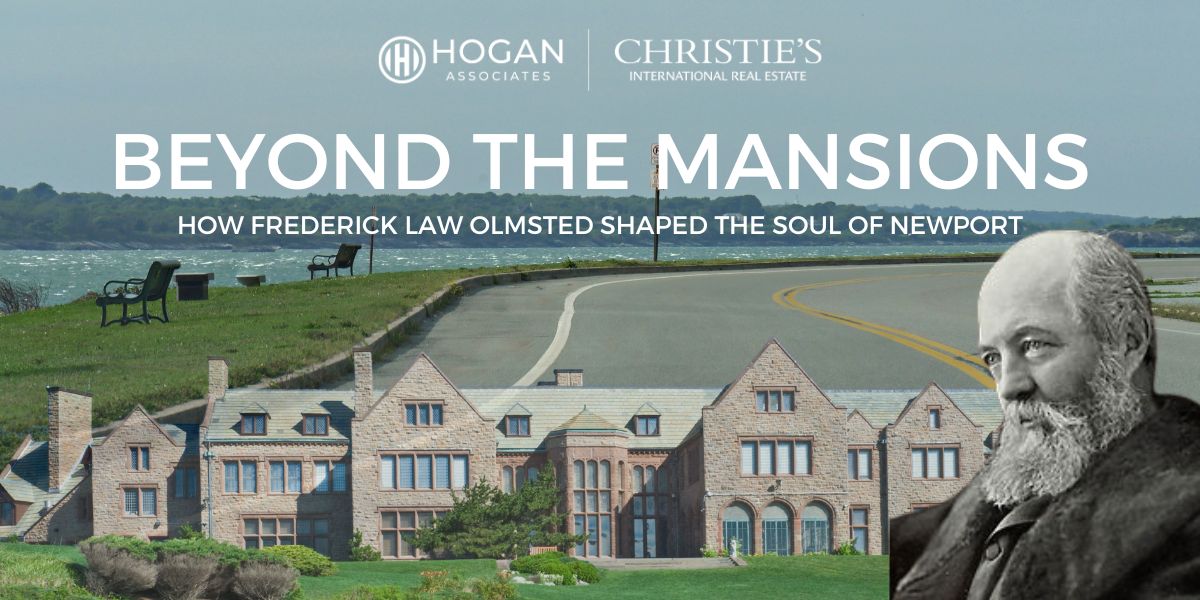Newport, Rhode Island conjures images of mansions and cobblestone streets lined with charming boutiques. Behind the Gilded Age opulence lies a story of meticulous design, woven by the hands of world-renowned landscape architect, Frederick Law Olmsted.
Celebrated as the “father of landscape architecture,” Olmsted is known for co-designing New York City’s Central Park and the grounds of the White House and the US Capitol in Washington, D.C.
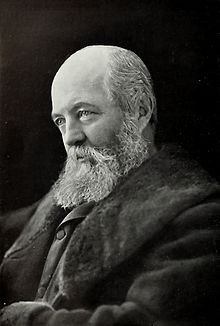
Olmstead believed in designing open parks and spaces for all Americans to enjoy and preferred a simple design to ornate grandiosity. He saw beyond the fleeting glamor of Newport’s social scene and the potential to shape a city that seamlessly blended nature’s beauty with urban elegance. And shape it he did.
Ocean Drive
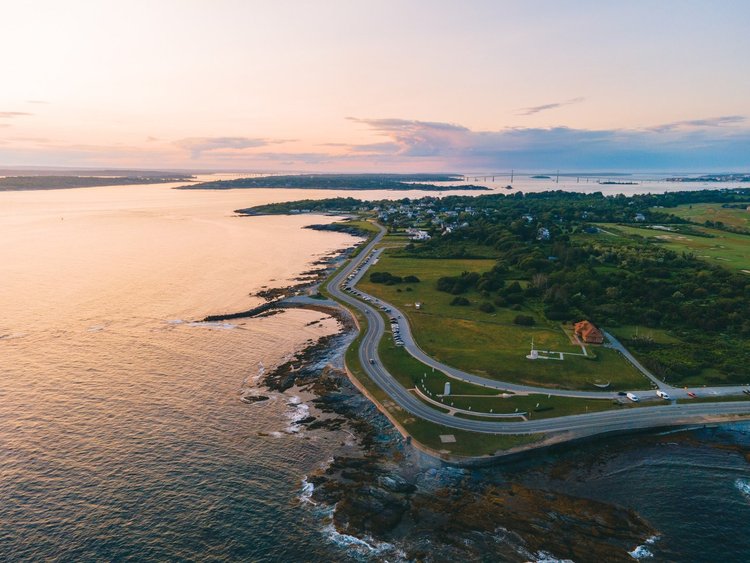
Olmsted is credited with designing the original plans for Newport’s iconic Ocean Drive. He envisioned a scenic route that wouldn’t merely connect points but would immerse travelers in the coastal panorama. Winding curves hug rugged cliffs, offering breathtaking vistas, while strategically placed trees frame the ocean like living art installations. Ocean Drive isn’t just a route; it’s an experience, a testament to Olmsted’s belief in the power of landscape to shape emotions.
Stoneacre Mansion
Stoneacre mansion was situated on three acres opposite Vernon Court between Ruggles Avenue and Victoria Avenue. Olmsted conceived of Stoneacre as a “park-like setting” with a variety of exotic trees to provide privacy for the Ellis family. Stoneacre was furnished with native and exotic trees including London Plane, Fern Leaf Beech, Japanese Maple, Zelkova, European Linden, English Oak, and Tulip Trees, as well as Silver Maple, Cucumber, and Sweet Gums. Man-made earthen forms and contours were designed to give a rolling and more interesting perspective to the overall site.
When the mansion was demolished in 1963, the land was converted to a private park in honor of Olmstead and his contributions to making Newport a place of open public spaces and winding private gardens.
Easton’s Beach and Morton Park
Olmsted valued accessible public spaces where communities could gather and families could create cherished memories.
In 1883, Olmsted was asked by Newport mayor R.S. Franklin, to design improvements to Easton’s Beach. Olmsted suggested creating a series of walking paths, baths, and a pavilion, which was later abandoned by the city. Instead, Olmsted was asked to design Easton’s Point, a compound of six shingle-style houses, known as the Land Trust Cottages, located on the eastern end of Easton’s Beach.
Meanwhile, Morton Park, once a barren plot, blossomed under Olmsted’s touch. In 1893, he transformed it into a vibrant green oasis, with winding paths, diverse plantings, and a central pavilion inviting community gatherings. These public spaces aren’t just parks; they’re the beating heart of Newport, vibrant threads woven into the city’s social fabric.
Hammersmith, Blue Gardens, and Rough Point
Olmsted’s sons, Frederick Law Olmsted, Jr. and John Olmsted, took over the family business and formed Olmsted Brothers in the late 1890s. They designed the original landscape for President Kennedy’s summer home, Hammersmith Farm as well as Newport’s first true mansion, Chateau-sur-Mer. The firm completed numerous projects in Newport until 1970, when they closed their doors.
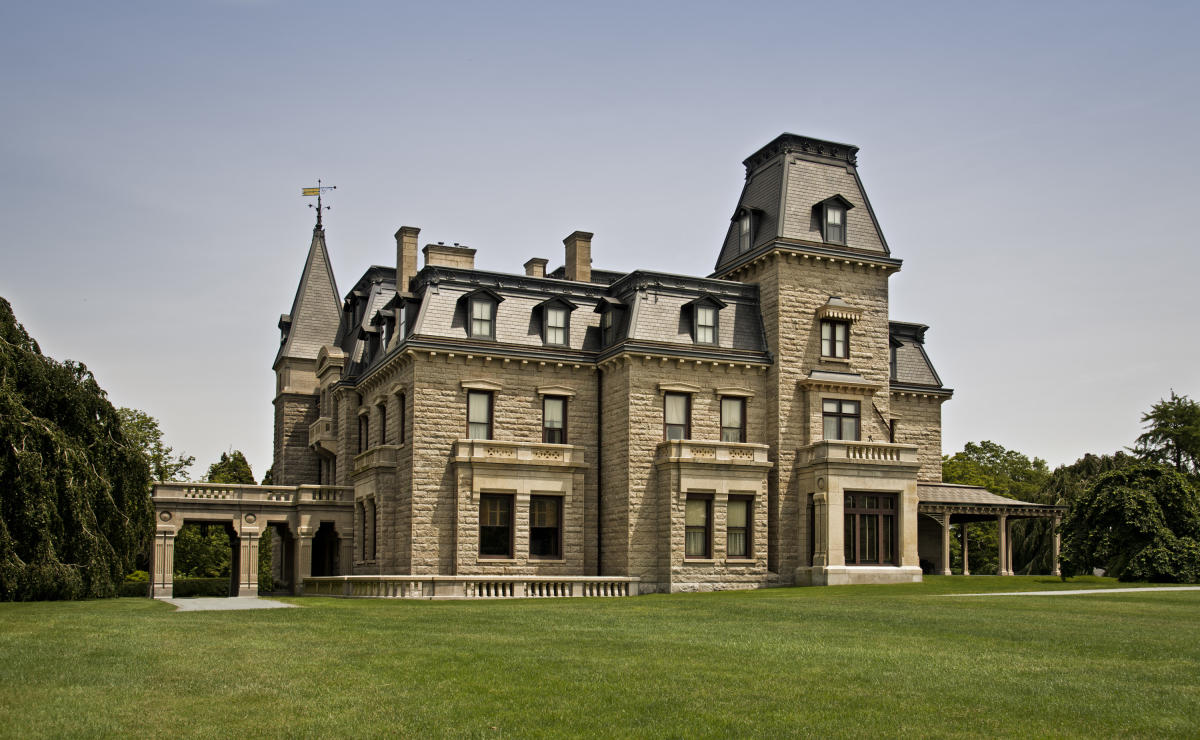
Olmsted, Jr. designed the gardens for Frederick W. Vanderbilt’s 10-acre waterfront estate, Rough Point (later the home of Doris Duke). There he crafted intricate gardens that danced with the architecture, creating a private sanctuary where the family could find solace amidst the social whirlwind. Hammersmith Farm, another Newport gem, showcases his talent for blending formal gardens with rolling meadows and rustic charm.
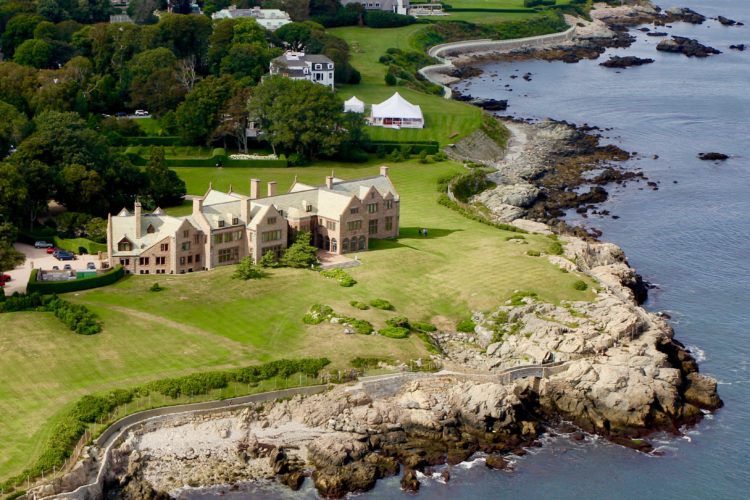
And then there’s the Blue Garden, a hidden masterpiece tucked away within the city’s hustle and bustle. This private haven, a symphony of blue hues reflected in the sky and ocean, whispers of Olmsted’s love for color and ability to evoke emotions through nature. It’s a testament to his belief that even the most opulent surroundings can benefit from a touch of the ethereal.

In the 1920s, Olmsted’s firm was hired to landscape the winding paths of The Glen Manor House in Portsmouth, RI, although he didn’t work on the project himself.
Olmsted’s Enduring Legacy
Newport’s beauty isn’t merely an accident of geography and wealth. It’s a conscious creation, a city sculpted by the vision of a landscape architecture maestro.
When you walk along Easton’s Beach, inhale the fragrance of roses at Rough Point, or watch children play in Morton Park, take a moment to appreciate the invisible hand that shaped it all. You’re experiencing the enduring legacy of Frederick Law Olmsted, a man who saw beyond the glitz and glamor to create a city that resonates with nature’s harmony and timeless elegance. To learn more about Newport’s architectural offerings, call (401) 680-6588 or send a message to info@hoganri.com. We’d be happy to guide you through the process of buying or selling a home in Rhode Island.



